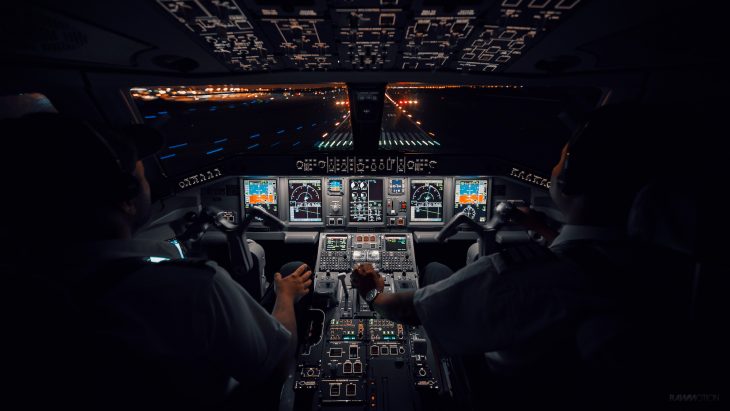
The dream of flying has captivated humanity for centuries. From the myth of Icarus to the Wright brothers’ first flight, the skies have always beckoned us. Today, flying schools around the world help turn this dream into a reality for many. These institutions play a crucial role in training the next generation of pilots, ensuring that they are equipped with the skills and knowledge needed to navigate the vast expanse of the skies safely. Let’s delve into the world of flying schools and uncover some fascinating facts about aviation training.
Flying School: Key Facts at a Glance
| Fact Number | Detail |
|---|---|
| 1 | The Wright brothers opened the world’s first civilian pilot training school in 1910. |
| 2 | There are two main types of pilot licenses: Private Pilot License (PPL) and Commercial Pilot License (CPL). |
| 3 | A PPL requires a minimum of 40 flight hours, while a CPL requires at least 250 hours. |
| 4 | Flying schools use flight simulators to provide a realistic training environment without leaving the ground. |
| 5 | The first solo flight is a significant milestone in a pilot’s training journey. |
| 6 | Medical fitness is crucial; pilots undergo regular medical examinations to ensure they’re fit to fly. |
| 7 | Communication skills are vital; pilots must be proficient in English, the international language of aviation. |
| 8 | Flying schools also offer specialized courses in areas like instrument training and multi-engine ratings. |
| 9 | The cost of aviation training can vary widely, depending on the school, location, and type of aircraft used. |
| 10 | Safety is paramount; flying schools have strict safety protocols and regular equipment checks. |
Diving Deeper into the World of Flying Schools
- Historical Beginnings: The Wright brothers, pioneers of aviation, opened the world’s first civilian pilot training school in Montgomery, Alabama, in 1910. This marked the beginning of formalized pilot training, paving the way for the establishment of flying schools worldwide.
- Types of Pilot Licenses: There are various licenses available, with the Private Pilot License (PPL) and Commercial Pilot License (CPL) being the most common. A PPL allows individuals to fly for personal and recreational purposes, while a CPL permits pilots to get compensated for flying.
- Training Hours: To obtain a PPL, one needs a minimum of 40 flight hours, including at least 20 hours of flight training with an instructor and 10 hours of solo flight time. A CPL, on the other hand, requires a minimum of 250 flight hours.
- The Role of Flight Simulators: Modern flying schools use flight simulators to mimic real-life flying conditions. These simulators provide students with a realistic training environment, allowing them to practice various scenarios without the risks associated with actual flying.
- The First Solo Flight: One of the most significant milestones in a pilot’s training is their first solo flight. This is when a student pilot flies alone, without an instructor, showcasing their skills and confidence.
- Medical Requirements: Pilots need to be in top physical and mental condition. Regular medical examinations ensure that they are fit to fly. Conditions like color blindness or uncontrolled diabetes can disqualify someone from becoming a pilot.
- The Language of the Skies: English is the international language of aviation. Regardless of their native language, pilots must be proficient in English to communicate with air traffic control and other pilots.
- Specialized Training: Beyond the basic licenses, pilots can undergo specialized training. This includes instrument training, which allows pilots to fly in a wider range of weather conditions, and multi-engine ratings, which qualifies them to fly aircraft with more than one engine.
- The Cost Factor: Aviation training can be expensive. The cost varies depending on factors like the flying school’s location, the type of aircraft used for training, and the duration of the course.
- Safety First: Safety is the top priority for flying schools. They have stringent safety protocols in place, and aircraft undergo regular maintenance checks to ensure they are in optimal condition.
In Conclusion
Flying schools play a pivotal role in the world of aviation. They mold aspiring pilots, equipping them with the skills and knowledge needed to soar the skies safely. As the demand for air travel continues to grow, the role of flying schools becomes even more crucial. They ensure that the skies are navigated by well-trained, competent, and confident pilots, making air travel safer for all.
Was this page helpful?
Our commitment to delivering trustworthy and engaging content is at the heart of what we do. Each fact on our site is contributed by real users like you, bringing a wealth of diverse insights and information. To ensure the highest standards of accuracy and reliability, our dedicated editors meticulously review each submission. This process guarantees that the facts we share are not only fascinating but also credible. Trust in our commitment to quality and authenticity as you explore and learn with us.
